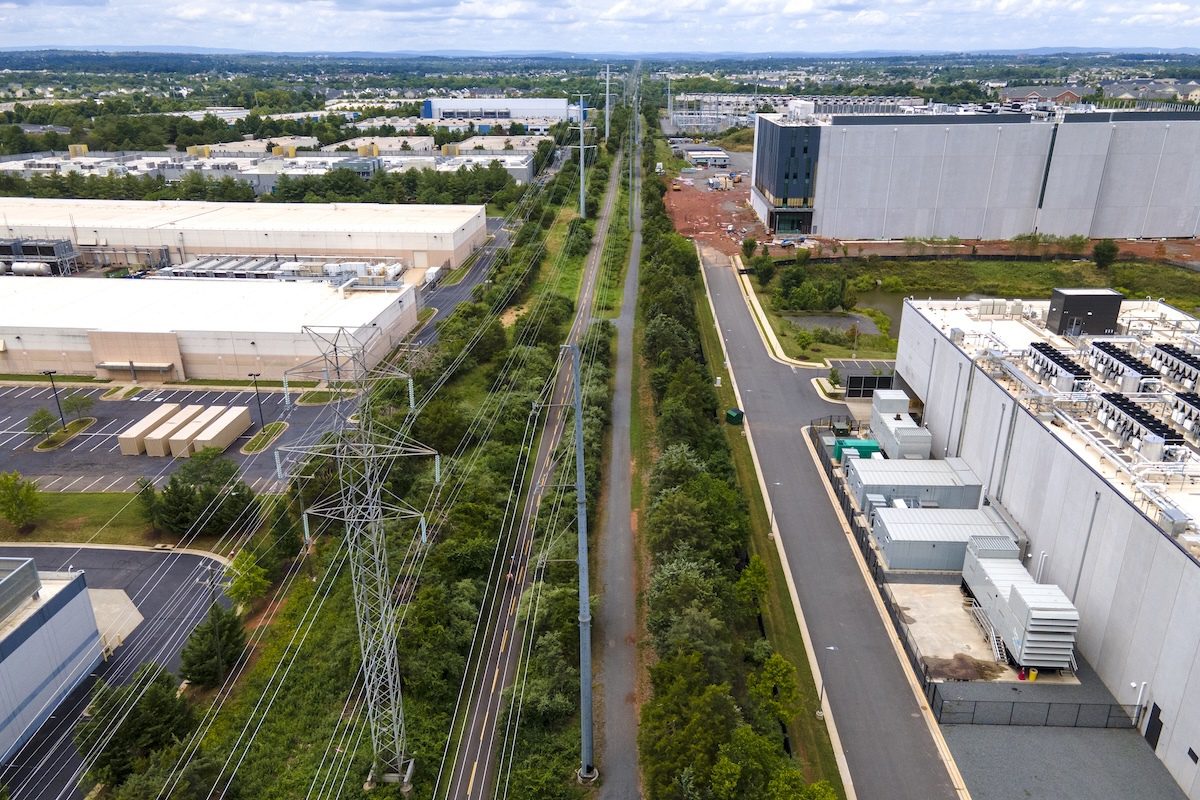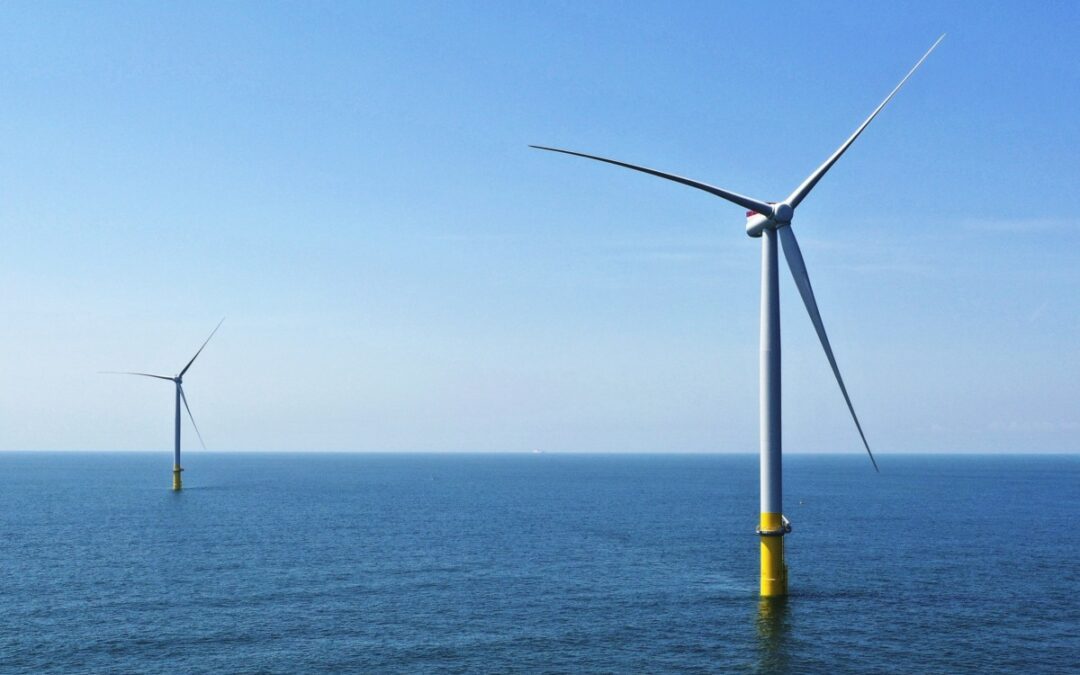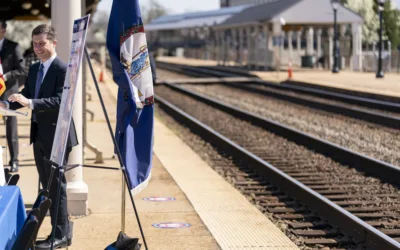
High-voltage transmission lines provide electricity to data centers in Ashburn in Loudon County, Virginia, on Sunday, July 16, 2023. (AP Photo/Ted Shaffrey, File)
One of the wealthiest companies in the world is planting deeper roots in Virginia—but at what cost to residents?
In Northern Virginia neighborhoods, residents have already lived with the side effects of a Google data center. Families describe cracked drywall from constant construction, sleepless nights from the drone of cooling fans, and children woken before dawn by jackhammering just beyond their backyards.
SCROLL MORE: Data centers have been overwhelming Virginia neighborhoods with noise and environmental impacts.
Now, Google is deepening its roots in Virginia with a $9 billion expansion that includes a new data center near Meadowville Technology Park in Chesterfield County.
The announcement drew applause from Gov. Glenn Youngkin and local officials, who framed the project as proof that Virginia is a hub for innovation and job creation. They pointed to Google’s recent community investments, including scholarships and local nonprofit support, as signs of goodwill.
But while the speeches promised economic growth, they left Virginians with few answers about what the new facility will mean for their wallets, their water, and their environment.
Virginia as data center capital
Virginia already hosts the world’s largest concentration of data centers, which are especially dense in Loudon and Prince William counties. These massive server farms, often resembling windowless warehouses, process everything from online shopping orders to artificial intelligence (AI) applications.
They are also energy-intensive. According to state data last year, Virginia’s data centers consumed more than 10,000 gigawatt-hours of electricity in 2023. From Carbon Collective’s reporting, just one gigawatt could power approximately 876,000 households for one year.
For Virginians, that scale matters because the grid—a network of power plants, transmission lines, and substations that keep electricity flowing to homes and businesses—has to keep up with every watt of demand. When data centers consume so much power, utility companies must build new plants or upgrade infrastructure to match—costs that could land on household bills to pay for growth.
The demand in Virginia could triple by 2040. Dominion Energy, the state’s largest utility, now routes roughly 20% of its power to data centers and has connected 70 new facilities in recent years—the equivalent of powering 650,000 homes, according to reporting from Serrari Group.
In response, Dominion has proposed a new natural gas plant in Chesterfield, which could increase fossil fuel use at a time when climate experts warn the state should be reducing it. Critics argue this growth locks residents into both higher bills and a heavier carbon footprint.
Who pays the price?
By 2040, household electricity bills in Virginia could rise as much as $444 a year as utilities expand the grid to handle soaring data center demand.
In addition to electricity, water use is another uncertainty. Data centers rely on vast amounts of water to cool their servers. Last year, a state report found that the average center consumes as much water as an “average large official building,” depending on the center’s “size, computing density, and type of cooling system.” With hotter summers and more frequent droughts, advocates worry that demand will outpace available resources.
Larger facilities can use up to 5 million gallons of water a day. That’s the same as a town of 10,000 to 50,000 people, according to the Environmental and Energy Study Institute. In Northern Virginia alone, data centers consumed nearly 2 billion gallons of water in 2023, a 63% increase from 2019.
“They’re breaking our energy system,” Chris Miller, president of Piedmont Environmental Council, a Virginia-based nonprofit, told The Richmonder. “They’re breaking our water systems, and that puts all of us at risk. It puts us at risk in terms of impacts on communities and the environment, but it also puts us at risk because of the rapid increase in utility rates.”
RELATED: Youngkin invites AI into the Virginia government—tech experts say it’s a bad idea
Julie Bolthouse, Piedmont Environmental Council’s land use director, echoed Miller’s concerns in an interview with Inside Climate News.
“Really, what it comes down to is money,” she said. “Between the amount of water consumed to cool massive facilities and the companies not being willing to put in the extra dollars to help protect our water supply. That’s the problem.”
And unless state lawmakers step in with new regulations, much of the cost of keeping utility systems stable for Big Tech is likely to be passed down directly to residents.
For many Virginians, those regulations seem unlikely to come.
Politics and regulation
In the months leading up to Virginia’s 2025 legislative session—in which elected lawmakers were due to vote on a number of tech and AI regulations—some of the most well-known names in Big Tech donated large sums of money to those very politicians. Of 27 proposed bills that directly addressed the data center industry, only one substantive bill passed both the House and Senate.
Gov. Youngkin, who has closely aligned himself with the Trump administration’s tech policies and who received a $1 million donation from the founder of an AI-taught elementary school, dismissed those concerns, praised data centers for generating jobs and expanding the tax base, and told 12 On Your Side that decisions about where data centers are built should be left to counties, not state regulators.
“Do we need to make sure that citizen voices are heard?” he said. “Yes. Do we need to make sure that local leaders are empowered to make decisions about where they go? Yes. Should that be decided in Richmond? Absolutely not.”
The broader stakes
Google’s $9 billion plan cements Virginia’s position as a global data hub, with Chesterfield set to join Northern Virginia’s “Data Center Alley.” But for residents, the expansion raises unresolved questions about utility bills, water access, and the pace of the state’s clean energy transition.
State leaders frame the project as proof of Virginia’s leadership in AI and technology. Yet as Big Tech expands deeper into the state, the tension between economic growth and environmental sustainability grows sharper. The challenge now is whether the benefits of Google’s investment will truly reach Virginia communities, or if those same communities will be left carrying the costs.
READ MORE: ‘Everybody’s getting something, except us’: VA debate over AI heats up in the Commonwealth

Spanberger unveils new plan to lower Virginians’ energy costs
The Democratic nominee for governor rolled out yet another plan aimed at making the cost of living more affordable in Virginia. When it comes to...

Trump tariffs add millions in costs to Dominion wind farm project
A Dominion executive told investors last week that President Donald Trump’s tariffs had already added $4 million to the cost of a major wind farm...

Virginia agency says Richmond water crisis was ‘completely avoidable’
Richmond may have broken state law related to public water, according to a notice from the Virginia Department of Health’s Office of Drinking Water....

Biden sets 10-year deadline for cities to replace lead pipes and make drinking water safer
A decade after the Flint, Michigan, water crisis raised alarms about the continuing dangers of lead in tap water, President Joe Biden is setting a...

Opinion: We must help communities that have been left behind, no matter who wins in November
In this op-ed, Justin Maxson and Sarah Jaynes advocate for prioritizing federal investments to uplift all communities and ensure widespread economic...

Hampton Roads, Stafford County road improvements coming thanks to Biden’s infrastructure law
“The bipartisan infrastructure law is continuing to deliver for Virginia’s communities,” said Rep. Abigail Spanberger. With billions already on the...





